Two blocks 1 and 2 start from same point A on a smooth slide at the same time. The track from A to B to C is common for the two blocks. At C the track divides into two parts. Block 1 takes the route C–D–E and gets airborne after E. Block 2 moves along CFGH. Point E is vertically above G and the stretch GH is horizontal. Block 1 lands at point H. (a) Where is the other block at the time block 1 lands at H? Has it already crossed H or yet to reach there? (b) Which block will reach at H with higher speed ?
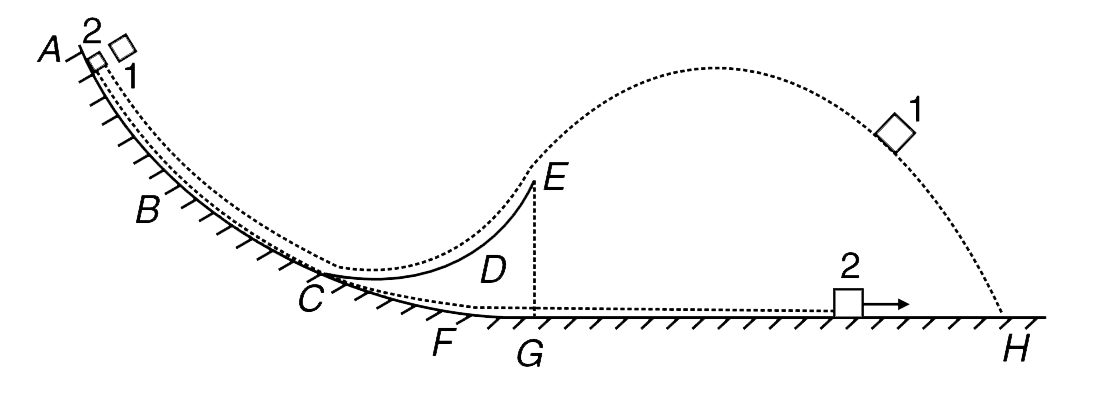
The correct Answer is:(a) Block 2 has already corssed H.
(b) Both reach H with same speed.
Step by step video, text & image solution for Two blocks 1 and 2 start from same point A on a smooth slide at the same time. The track from A to B to C is common for the two blocks. At C the track divides into two parts. Block 1 takes the route C–D–E and gets airborne after E. Block 2 moves along CFGH. Point E is vertically above G and the stretch GH is horizontal. Block 1 lands at point H. (a) Where is the other block at the time block 1 lands at H? Has it already crossed H or yet to reach there? (b) Which block will reach at H with higher speed ? by Physics experts to help you in doubts & scoring excellent marks in Class 11 exams.
Updated on:21/07/2023Topper's Solved these Questions
Similar Questions
A long taut string is plucked at its centre. The pulse travelling on it can be described as y(x,t)=e−(x+2t)2+e−(x−2t)2. Draw the shape of the string at time t=0, a short time after t=0 and a long time after t=0.
View SolutionBox 1 contains six block lettered A,B,C,D,E and F. Box 2 contains four blocks lettered W,X,Y and Z. How many five letters codewords can be formed by using three blocks from box 1 and two blocks from box2?
View SolutionA block weighing 10 N tavels down a smooth curved track AB joined to a rough horizontal surface. The rough surface has a friction coeficient of 0.20 with the block. If the block starts slipping on the track from a point 1.0 m above the horizontal surace, how far will it move on the rough surface?
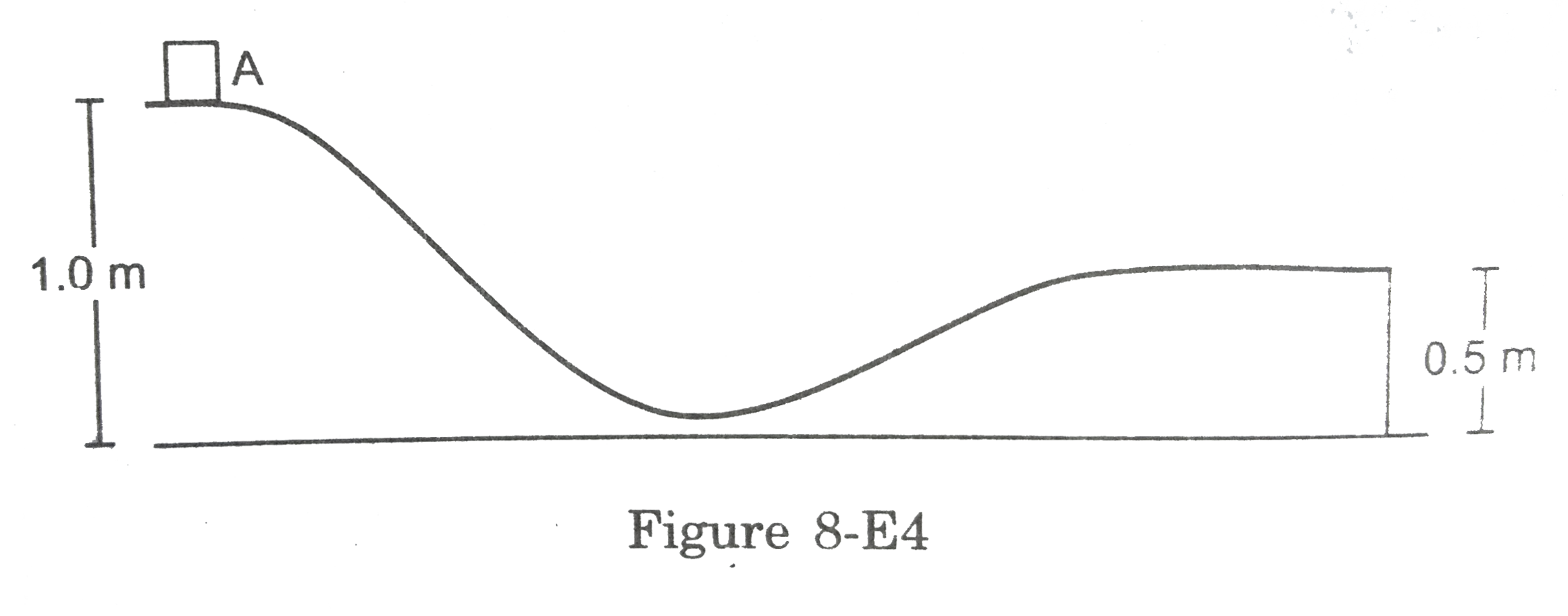
View SolutionA 0.098-kg block slides down a frictionless track as shown in (Fig. 5.208). . The time taken by the block to move from A to B is.
View SolutionA 0.098−kg block slides down a frictionless track as shown in (Fig. 5.208).
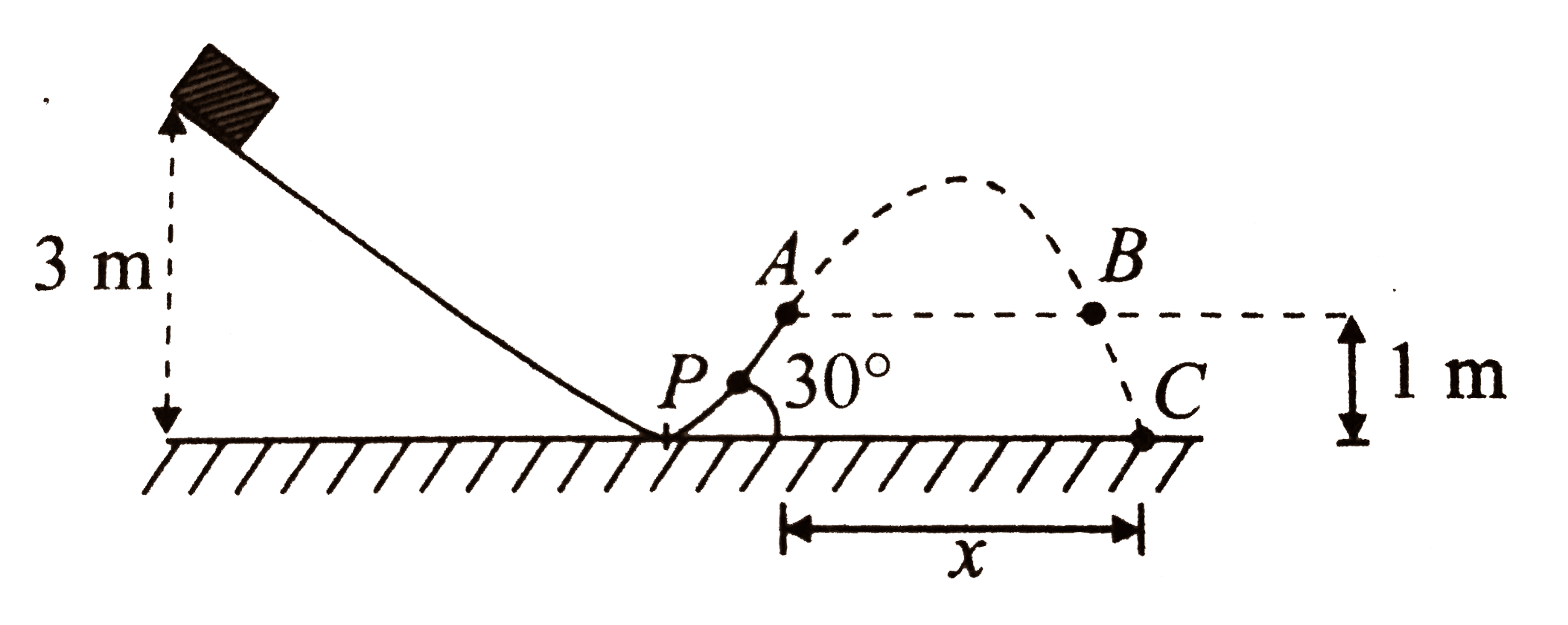 .
.
The time taken by the block to move from A to C is.
View SolutionA 0.098−kg block slides down a frictionless track as shown in (Fig. 5.208).
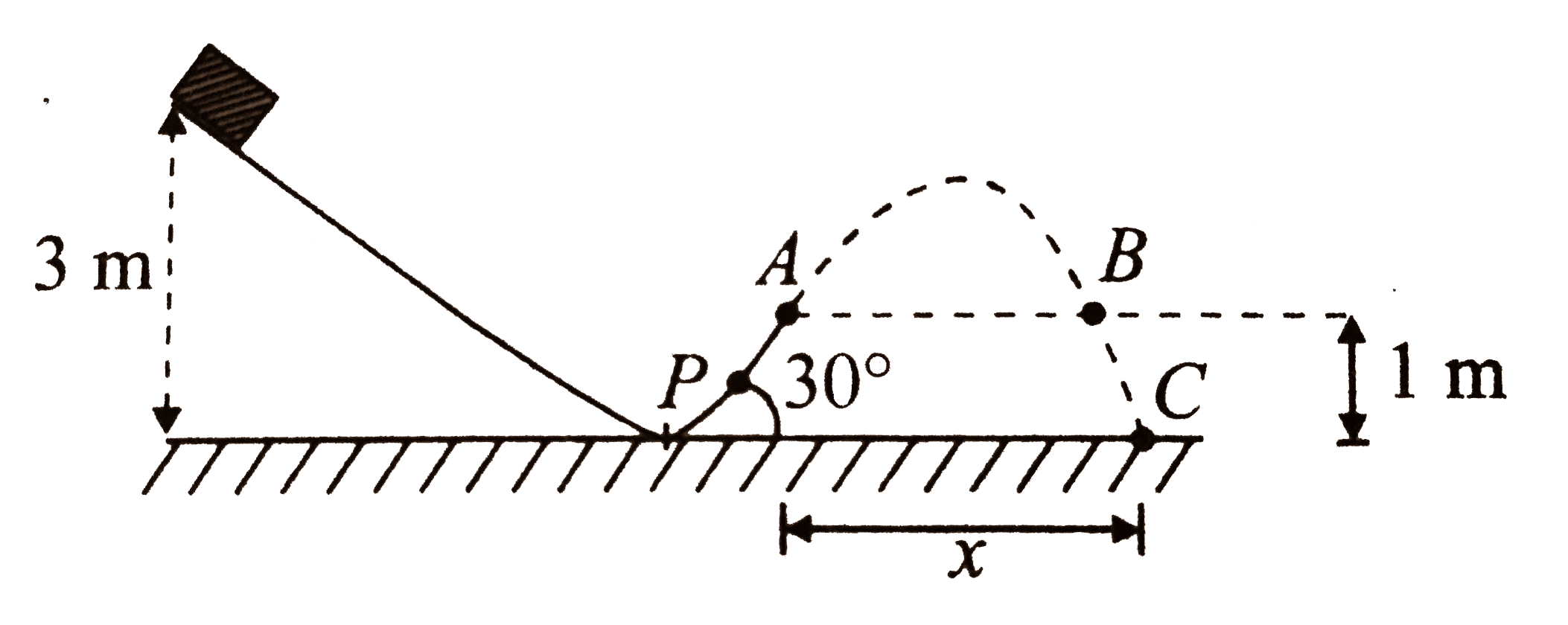 .
.
The horizontal distance x travelled by the block in moving from A to C is.
View SolutionA small block of mass m is pushed on a smooth track from position A with a velocity 2√5 times the minimum velocity required to reach point D. The block will leave the contact with track at the point where normal force between them becomes zero.
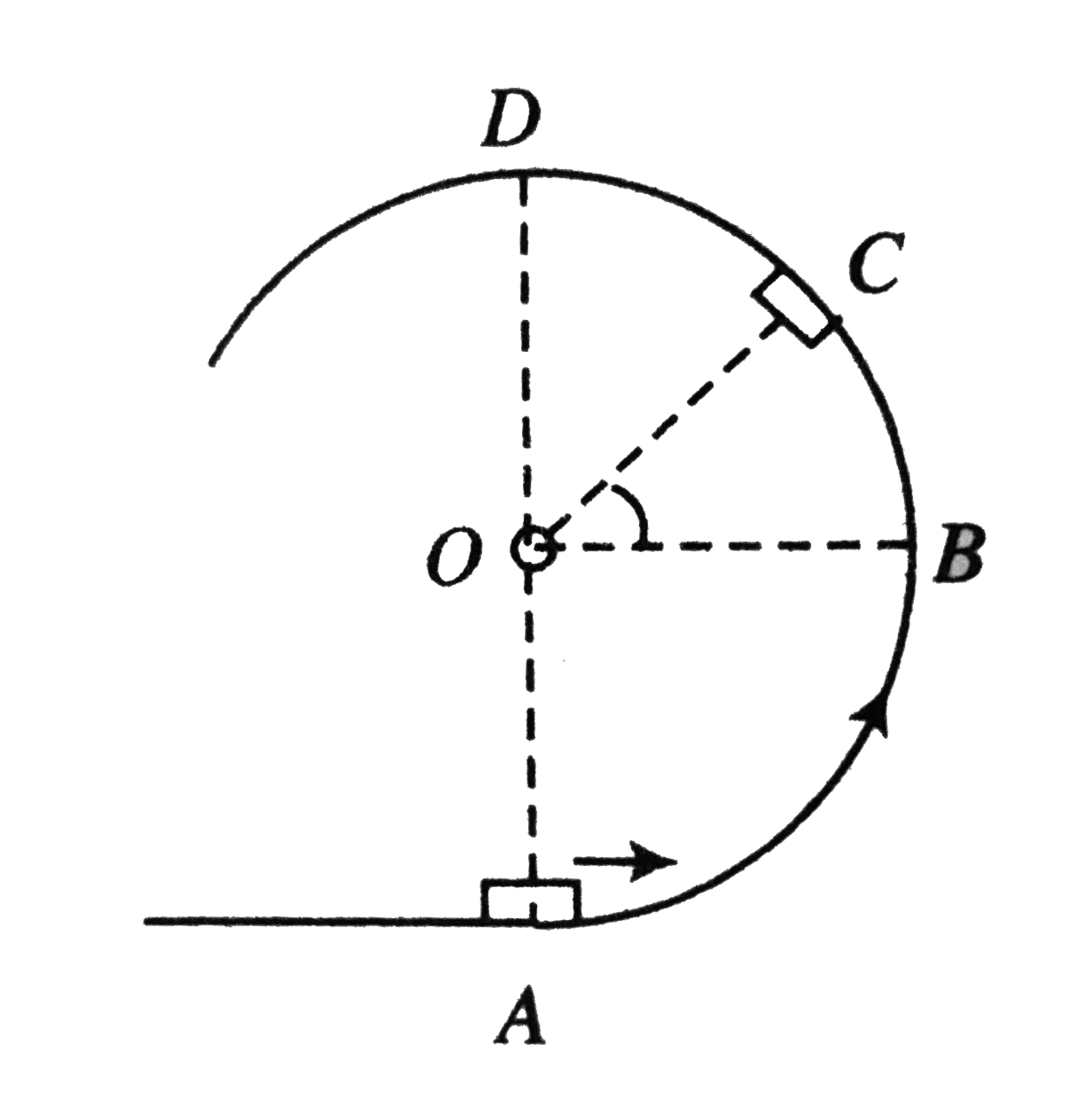
At what angle θ with horizontal does the block gets separated from the track?
View Solution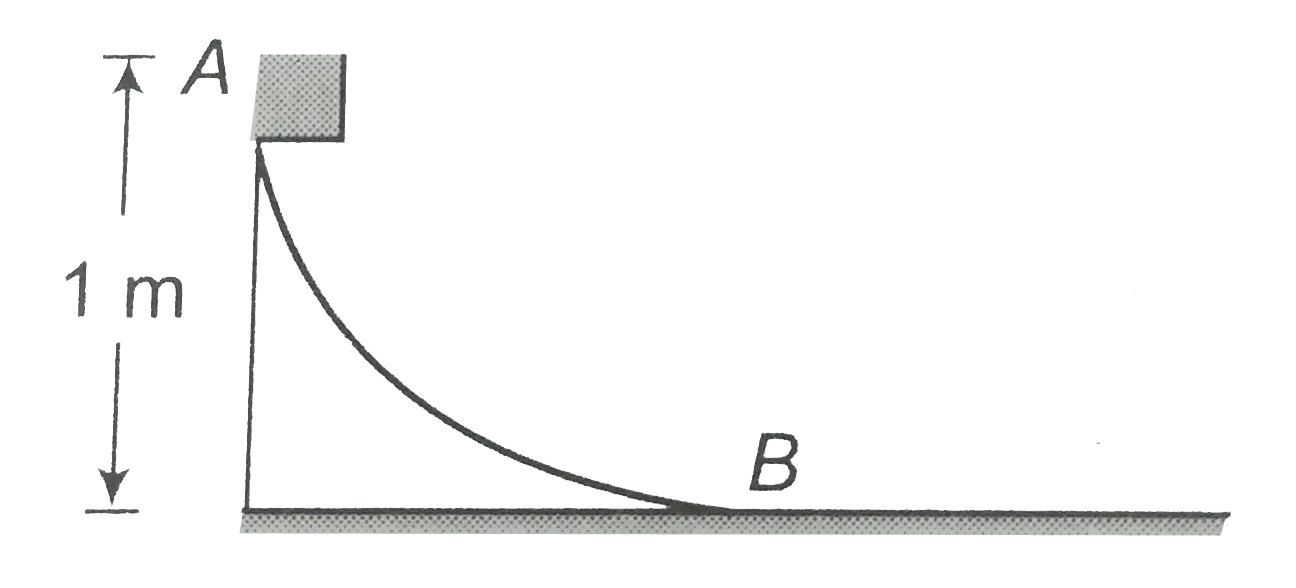
A block weighing 10 kg travels down a smooth curved track AB joined to a rough horizontal surface (see the figure.) The rough surface has a friction coefficient of 0.20 with the block. If the block starts slipping on the track from a point 1 m above the horizontal surface, how far will it move on the rough surface?
View SolutionA block is freely sliding down from a vertical height 4m on smooth inclined plane. The block reaches bottom of inclined plane and then it decribes vertical circle of radius 1m along smooth track. The ratio of normal reactions on the block while it crossing lowest point and highest point of vertical circle is
View SolutionA block weighing 40N travels down a smooth fixed curved track AB joined to a rough horizontal surface (figure). The rough surface has a friction coefficient of 0.10 with the block. If the block starts slipping on the track from a point 2.0m above the horizontal surface, the distance it will move on the rough surface is :−
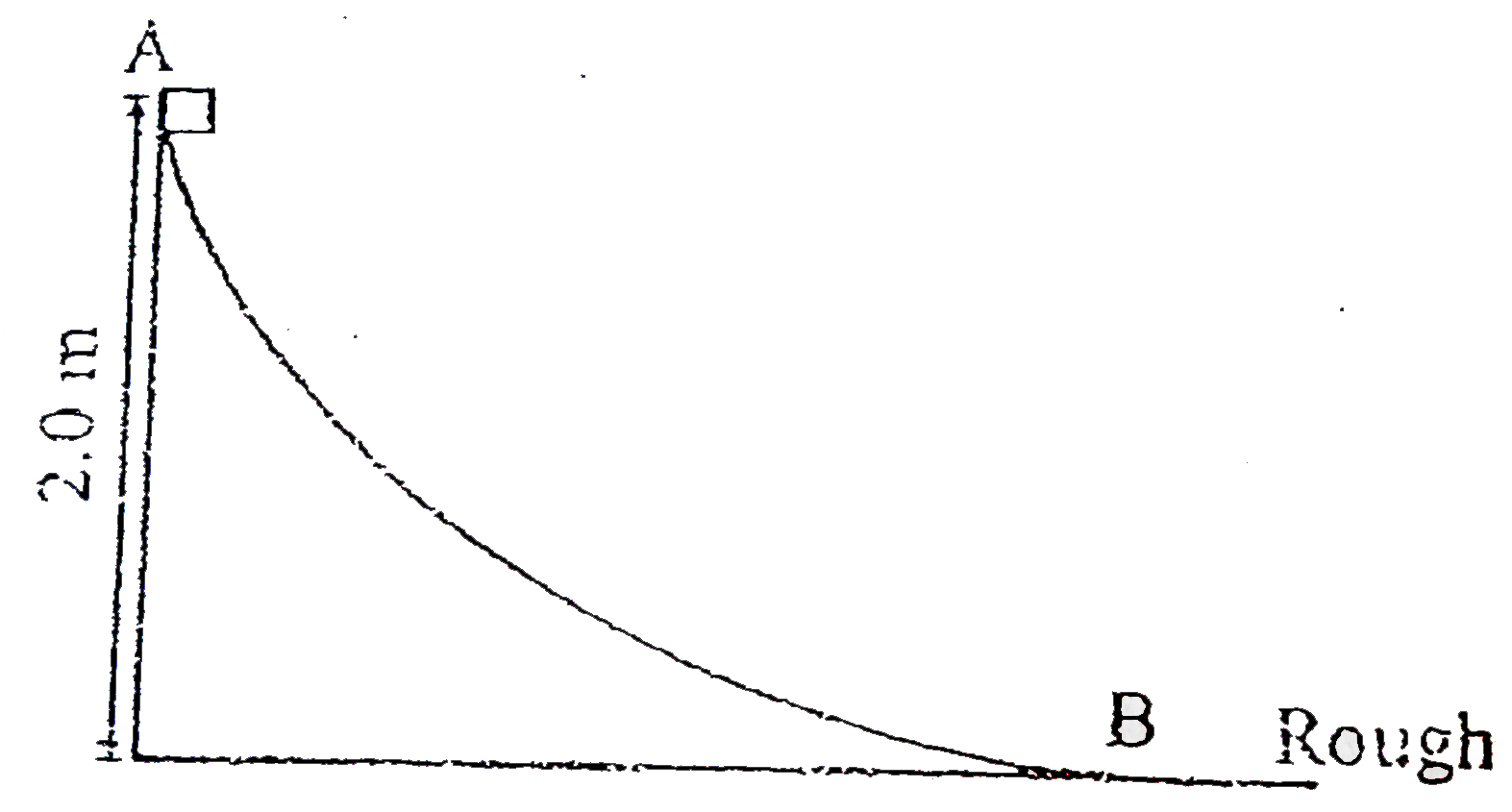
View Solutionदो ब्लॉक A तथा B परस्पर एक डोरी तथा स्प्रिंग द्वारा जुड़े है। डोरी एक घर्षणहीन घिरनी से चित्रानुसार गुजरता है। ब्लॉक B , एक स्थायी ब्लॉक C की ऊपरी क्षैतिज तल पर खिसकता है तथा ब्लॉक A स्थायी ब्लॉक C की उर्ध्वार्धर तल के अनुदिश खिशाक्त है। दोनों ब्लॉक एक समान चाल से खिसकते है। ब्लॉकों के तलो के मध्य घर्षण गुणांक 0.2है तथा स्प्रिंग का बल नियतांक 1960 न्यूटन/मी है यदि ब्लॉक A द्रव्यमान 2 किग्रा है, तो ब्लॉक B के द्रव्यमान तथा स्प्रिंग से संचित ऊर्जा की गणना कीजिए।
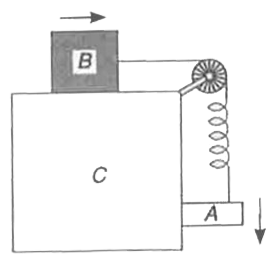
View SolutionA block weighing 10 N travels down a smooth curved track AB joined to a rough horizontal surface (figure). The rough surface has a friction coefficient of 0.20 with the block. If the block starts slipping on the track from a point 1.0 , above the horizontal surface, the distance it will move on the rough surface is x meter. Then value of x.

View SolutionA 0.098−kg block slides down a frictionless track as shown in (Fig. 5.208).
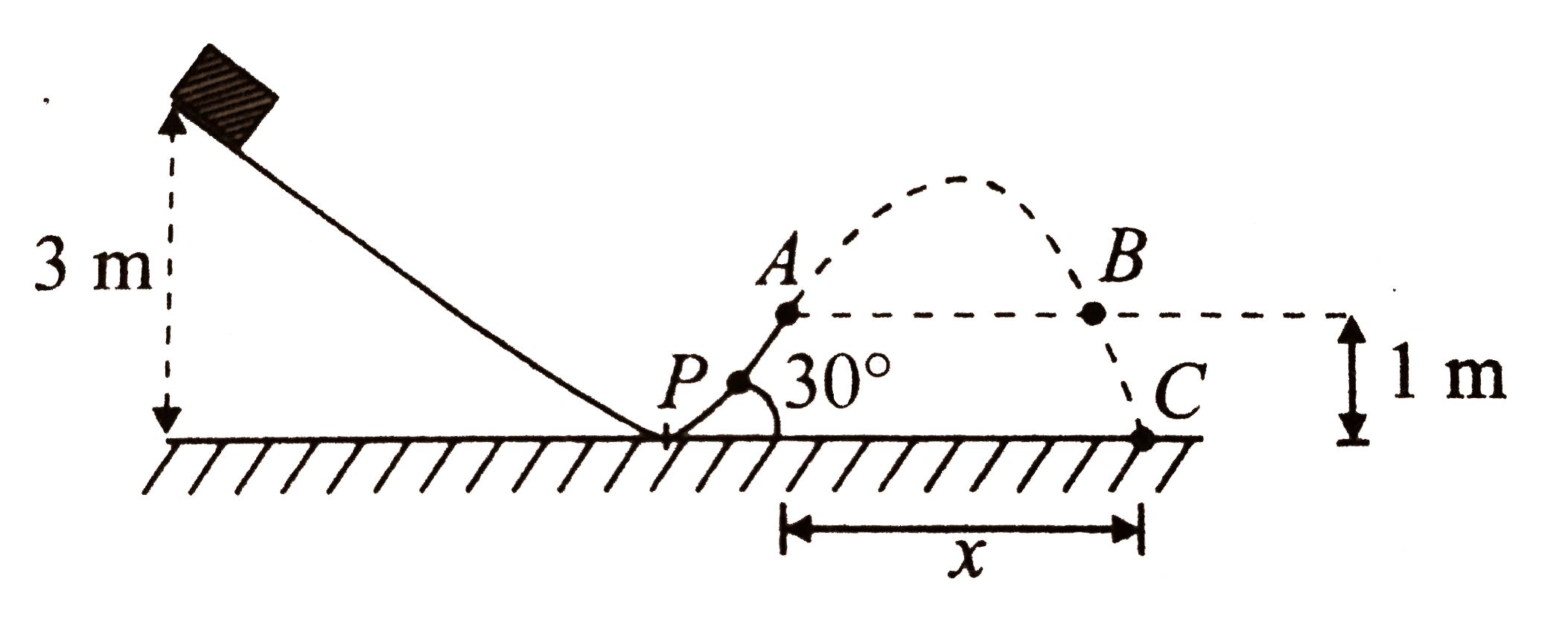 .
.
The time taken by the block to move from A to B is.
View SolutionA 0.098-kg block slides down a frictionless track as shown in (Fig. 5.208). . The time taken by the block to move from A to C is.
View SolutionA 0.098−kg block slides down a frictionless track as shown in (Fig. 5.208).
 .
.
The horizontal distance x travelled by the block in moving from A to C is.
View Solution
